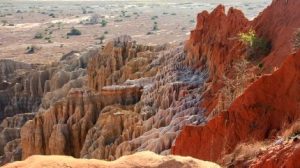Untapped Mineral Riches: Angola Looks Beyond Diamond Mining

Angola, the seventh-largest country in Africa, is most well-known for being one of the region’s biggest oil exporters. The commodity provides around half of the country’s fiscal revenues, yet it is not oil that is piquing renewed international interest in the country of late but rather its largely untapped mineral wealth.
The Southern African country already has a thriving diamond mining sector – accounting for around 8% of global production – yet approximately 60% of its territory is thought to be unexplored for metals and minerals.
“The fascinating thing about Angola is, it has so many mineral deposits but so few mines,” says Bryony Richards, an economic geologist at the University of Utah, whose specialisms include exploration and critical minerals. “There are enormous swathes of the country that have no real information about them besides some basic geology maps.”
Within these underexplored areas there are estimated to be considerable reserves of critical and rare earth minerals including copper, cobalt, manganese and lithium. These natural resources could provide Angola with an opportunity to diversify away from its over-reliance on oil and diamonds.
Diamonds are forever
Angola’s lucrative diamond mining sector is showing no signs of slowing down, despite a downturn in demand for the precious gems. Last year the country produced 9.7 million carats but expects this to increase by 50% in 2024.
If achieved, this will largely be down to the new Luele project, where state-controlled diamond miner Catoca started production last November. The project is the biggest diamond mine in the country and one of the world’s largest by estimated resources, which are expected to be in the region of 628 million carats to be mined over 60 years, according to estimates by the company seen by Reuters. Another of the company’s diamond mines, Catoca, is the world’s fourth largest.
De Beers, the world’s largest diamond producer by volume, is also increasing its presence in the country, having signed several agreements with the government covering processing and exploration. These are in addition to other contracts signed in 2022 when the company returned to Angola after exiting in 2012.
While diamonds are set to be the biggest contributor to mining revenue in the country for some time to come, there is increasing interest from foreign mining companies in exploring the country’s other resources.
Angola’s untapped rare earth riches
Notable recent investments in Angola include Pensana’s Longonjo rare earths project and Canadian miner Ivanhoe securing exploration rights over a vast area of the country.
The Longonjo rare earths deposit is located adjacent to the Lobito rail Corridor, which is set to provide a quicker western route to market for metal and minerals. The operation, which has an upfront capital cost of $217m (Kz182.21bn), will extract, concentrate, calcine and chemically refine the free dig material to produce a high-value mixed rare earth carbonate that contains 50% total rare earth oxide, of which 24% is neodymium and praseodymium. The commodity will then be railed 273km to the Atlantic port of Lobito for export.



